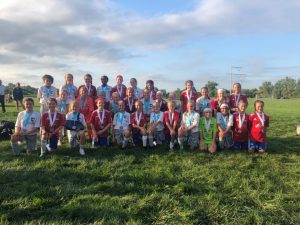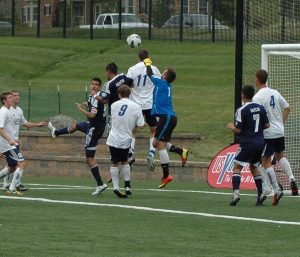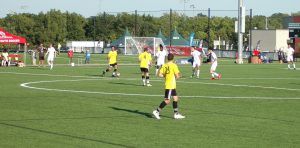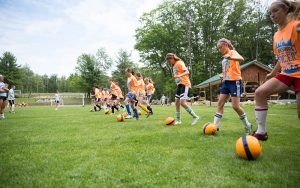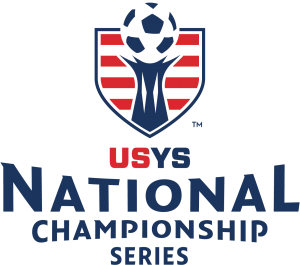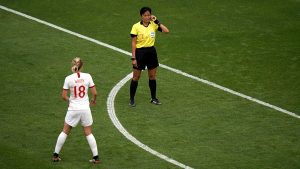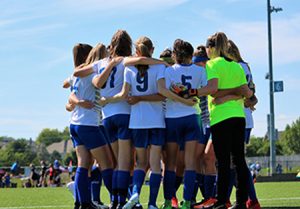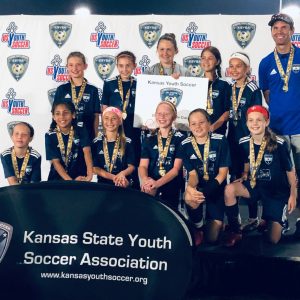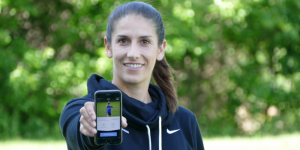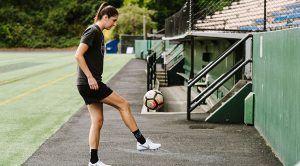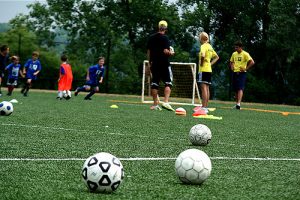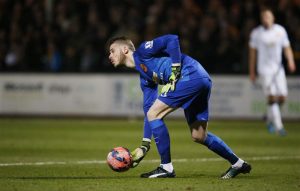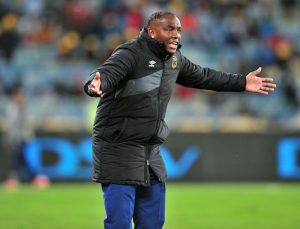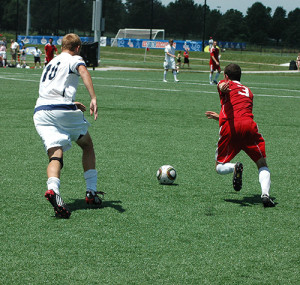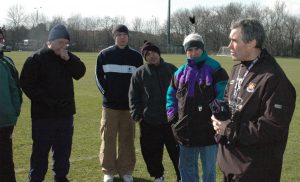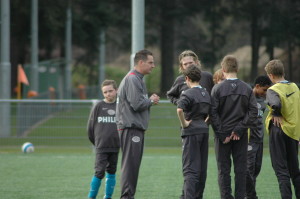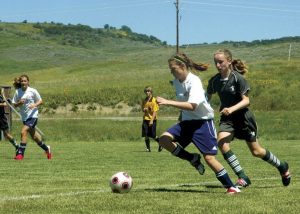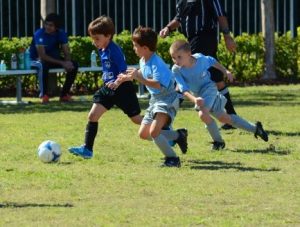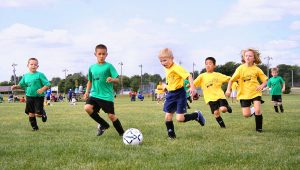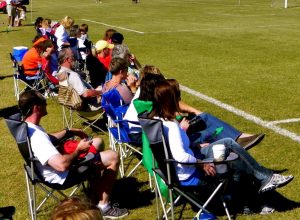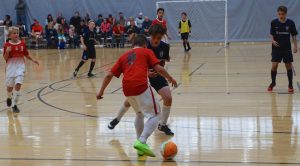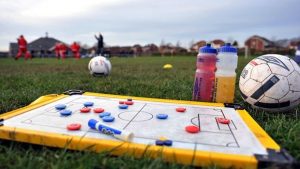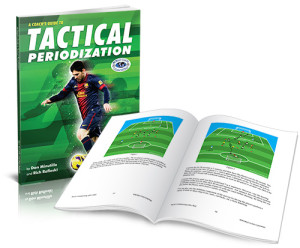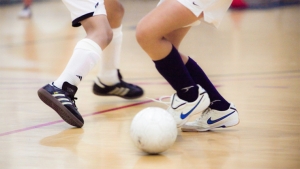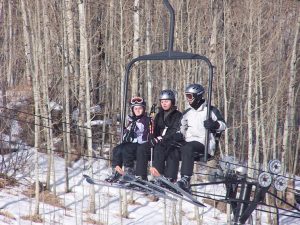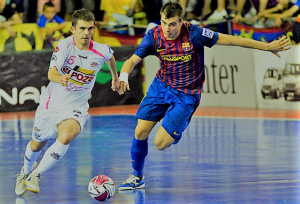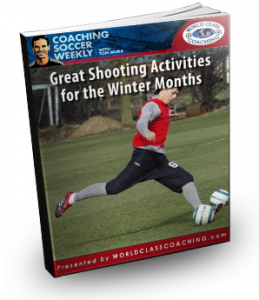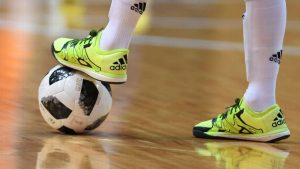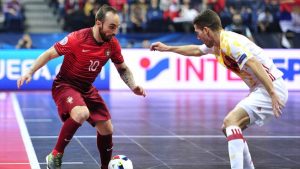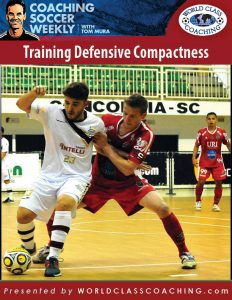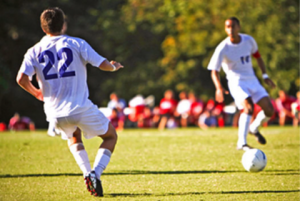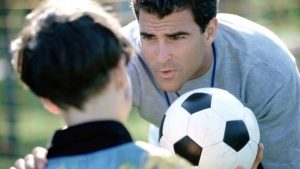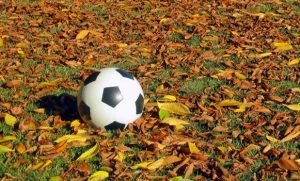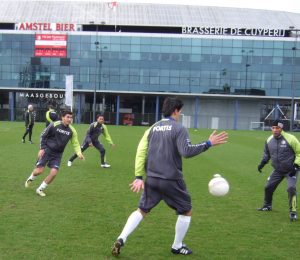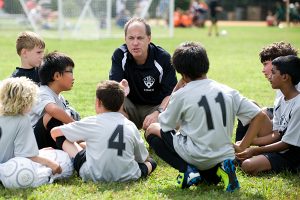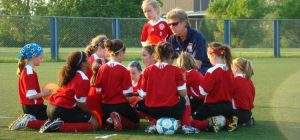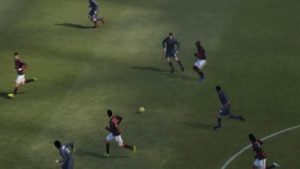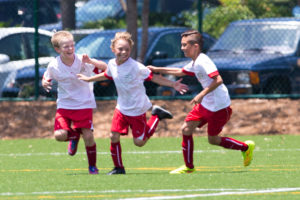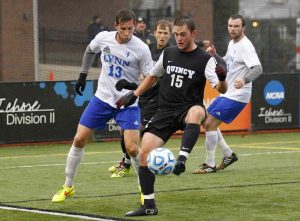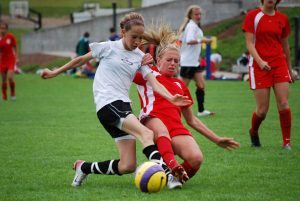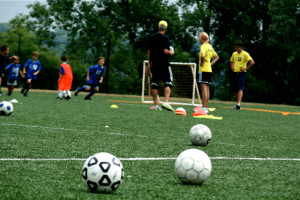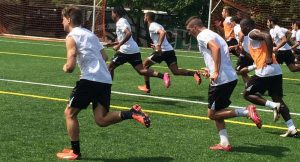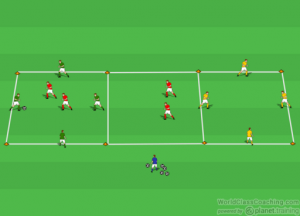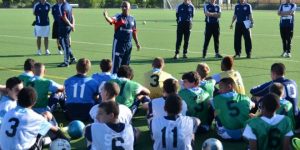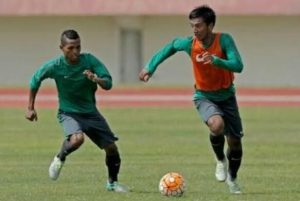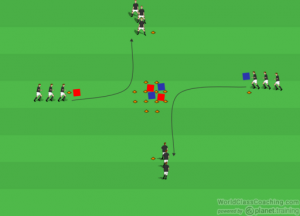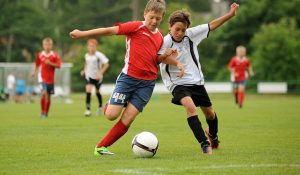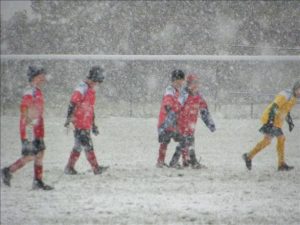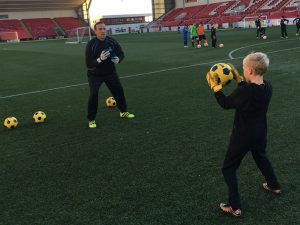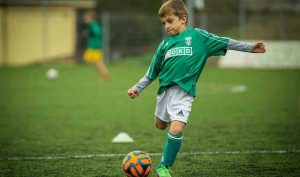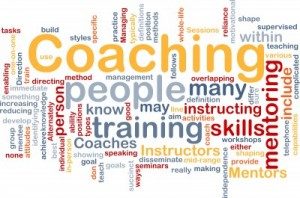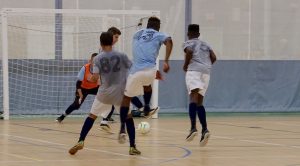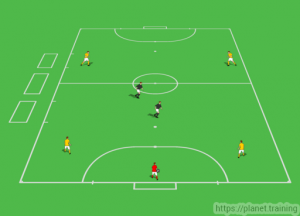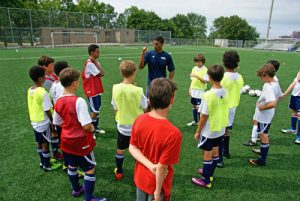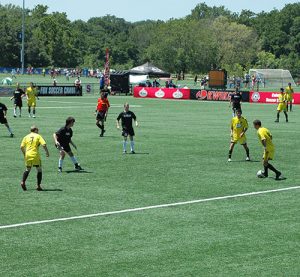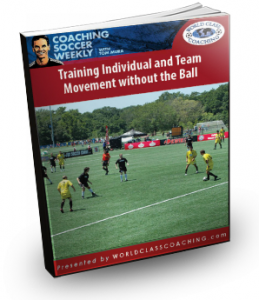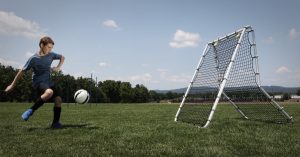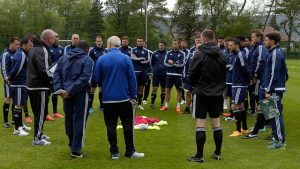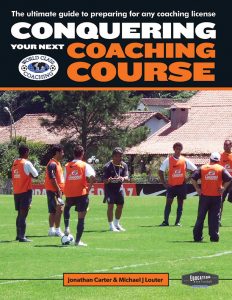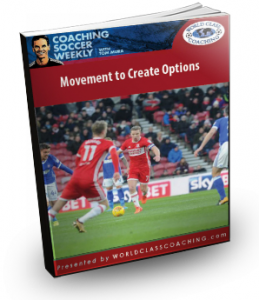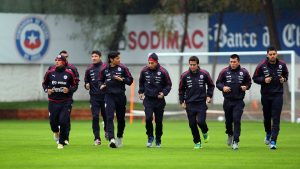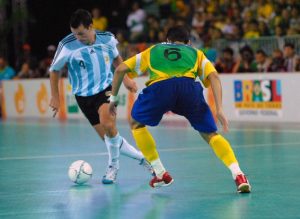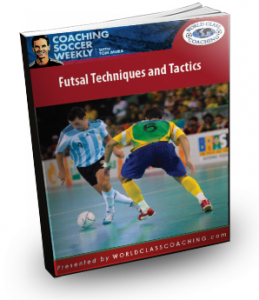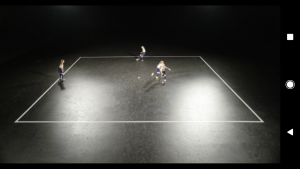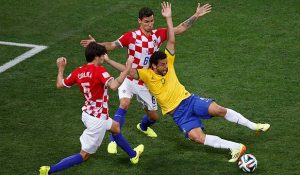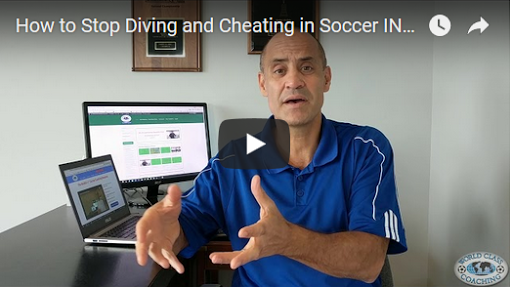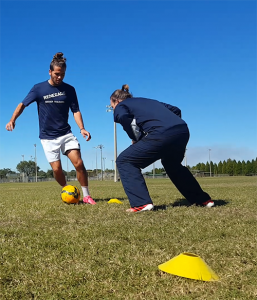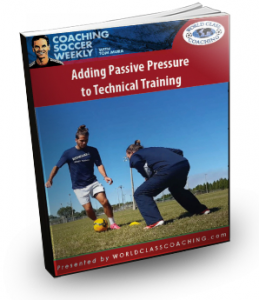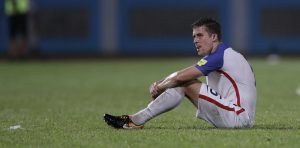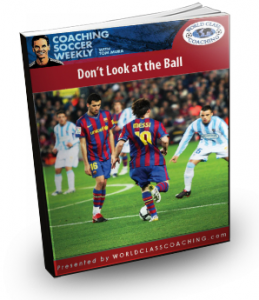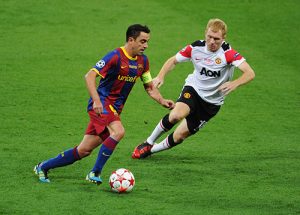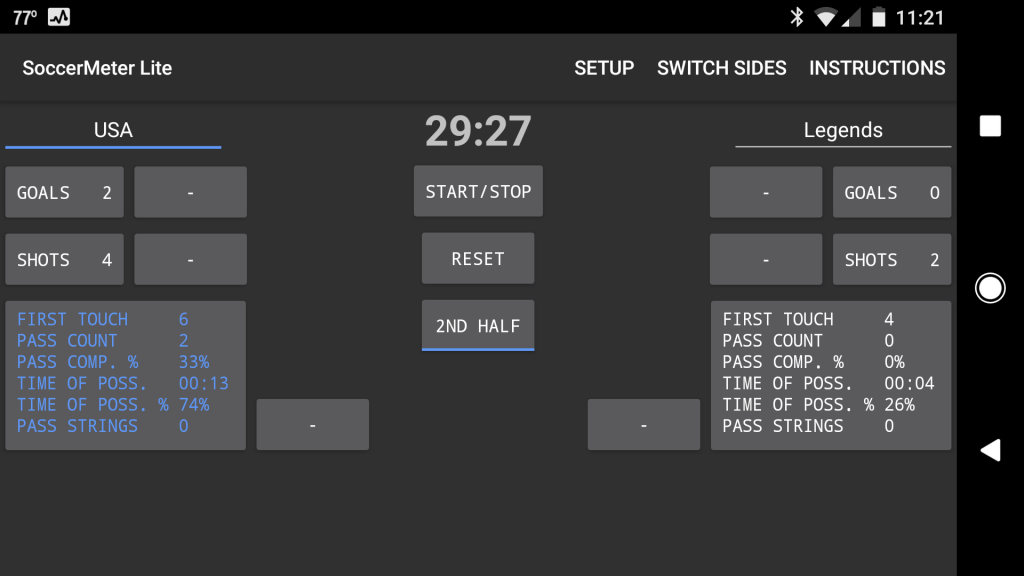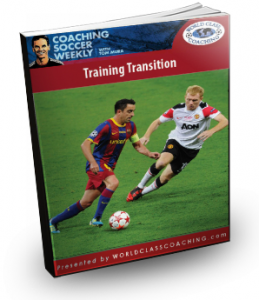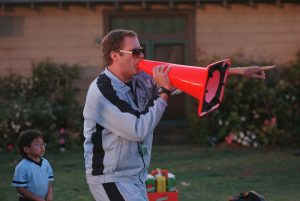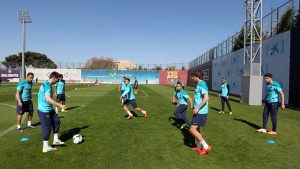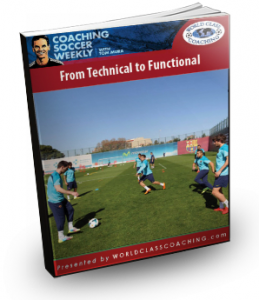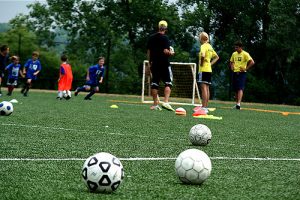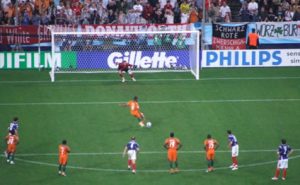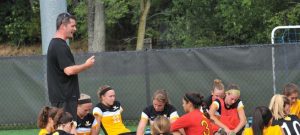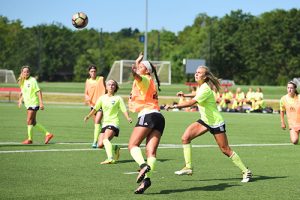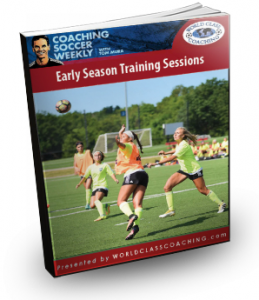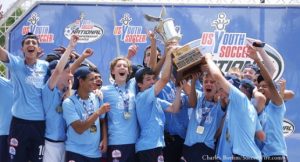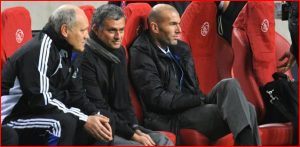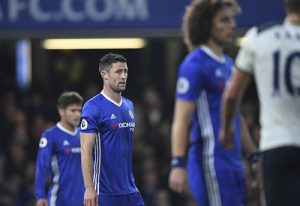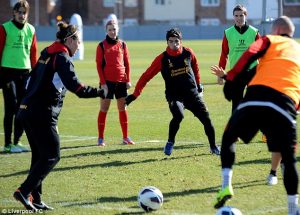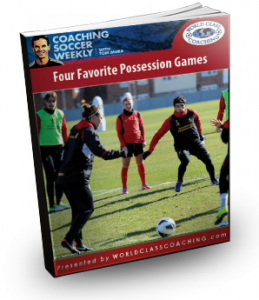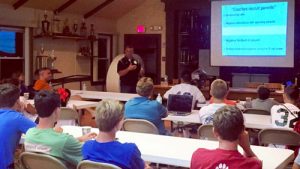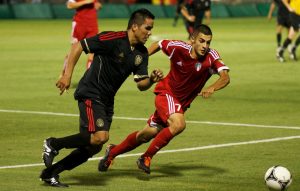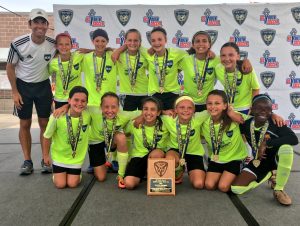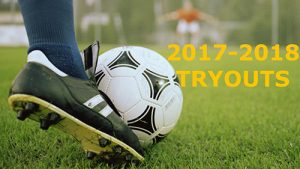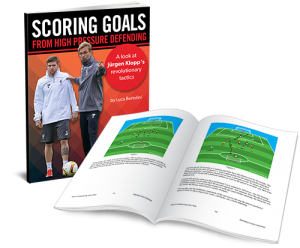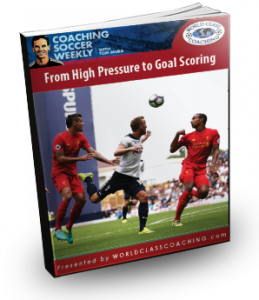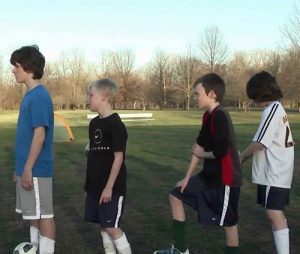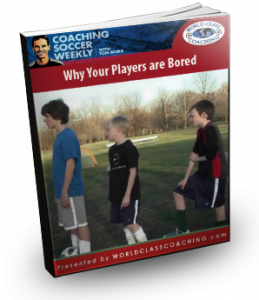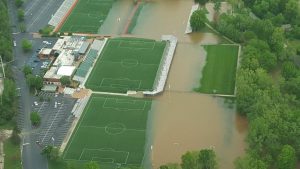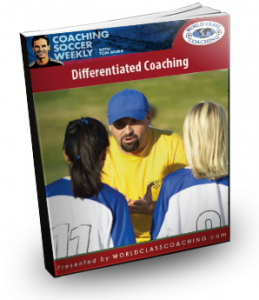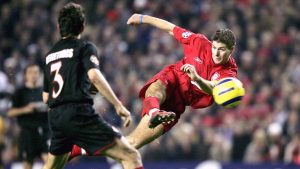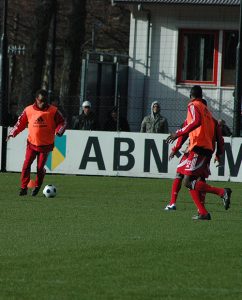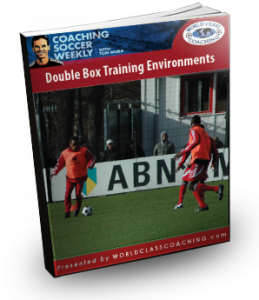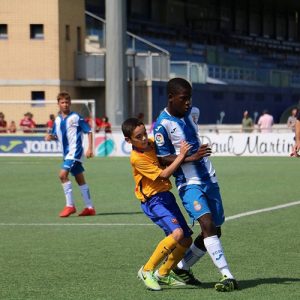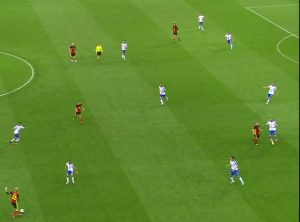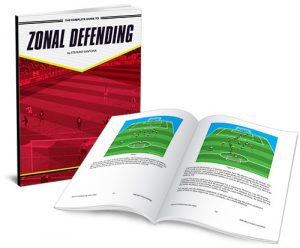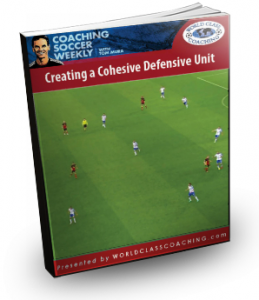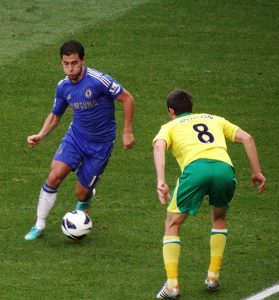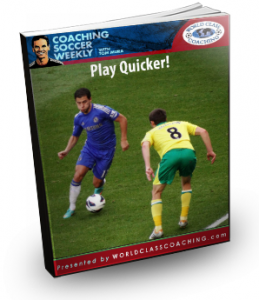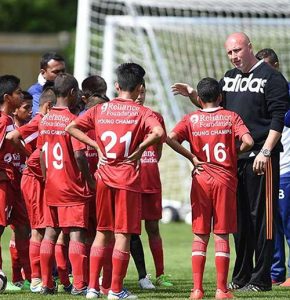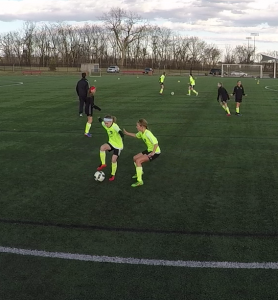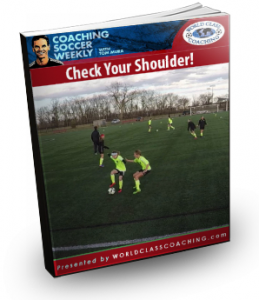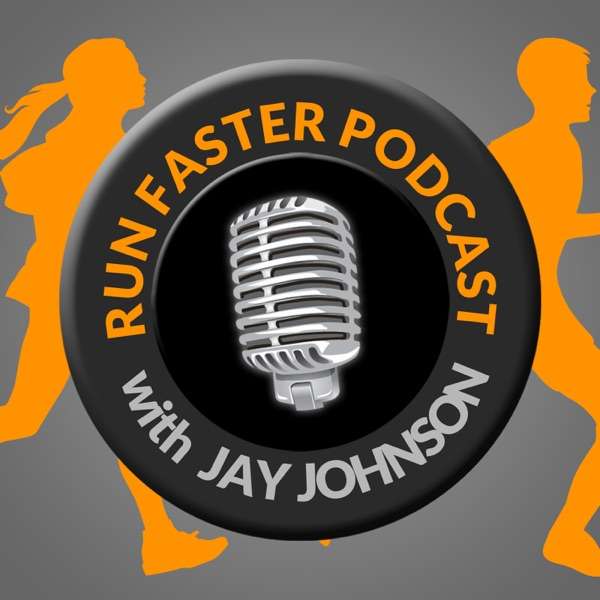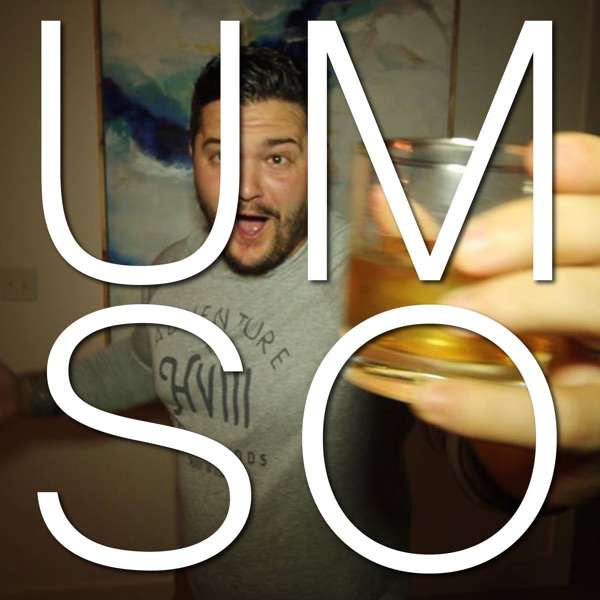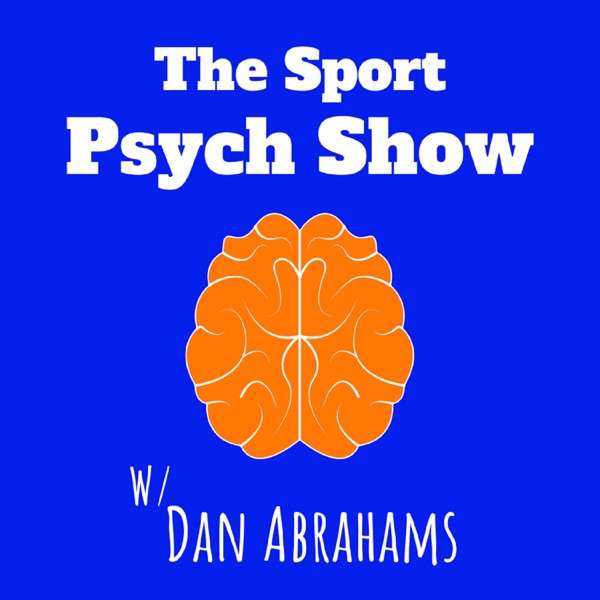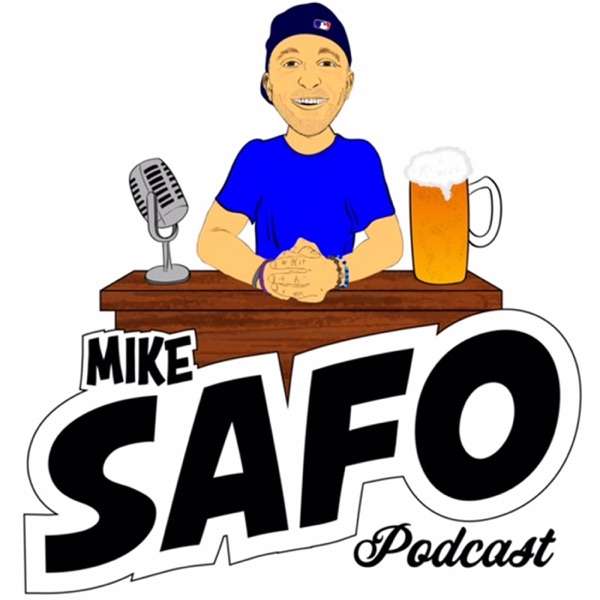► Don’t forget to subscribe: https://www.youtube.com/channel/UCJEbnehX2jFfYOmzEJkvwQw
►Connect with me on Instagram https://www.instagram.com/segevrabinoviz/
► Email: Segev.rabinoviz@gmail.com
INTRO
Coaching soccer weekly Episode 271 entertaining educational and inspiring content to help make you a more effective coach. Hello and welcome back to coaching soccer weekly presented by World Class coaching. My name is Segev Rabinoviz. And this is the podcast devoted to bringing you cutting edge methods, techniques and tactics for coaching soccer. It doesn’t matter if you’re an experienced coach who has been training teams for many years, or if you’re a new coach and working with a team for the very first time, there’s something we can all do to take our coaching to the next level. About five years ago, I was doing my see license. And at the end of the course, the instructor told us how important it was for us to look for other ways to improve our coaching education. So what he did was he turned around on the board and wrote three podcasts. And one of those podcasts was coaching soccer weekly. And for five years on Friday, on the way to training every single week, I would be excited to listen to Tom. Just talk soccer, just talk about his teams. And all that really resonated with me, as I’m sure it did with all of you. When I came on the show for Episode 232. I told Tom how interesting it was because I felt like I knew I knew who he was because I’ve listened to him every week for five years. And the weird thing was, he didn’t know who I was. And I know that all of us appreciate all the hard work. And all the lessons that we’ve taken from these past six years that he’s done the podcasts. And what’s interesting is that because I’ve listened to him every week, for five years, my coaching style, the words that I use the phrases, my style of play, was really influenced by Tom. So moving forward, every week, when you listen to me, there’s always going to be a little bit of Tom, in my sessions, in my phrases, and hopefully, in this intro, coaching soccer weekly Episode 272 entertaining educational and inspiring content to help make you more effective.
Hello, and welcome back to coaching soccer weekly, presented by world class. My name is Simon Rabinovich. And this is the podcast devoted to cutting edge methods, techniques and tactics for coaching soccer. It doesn’t matter if you’re an experienced coach who’s been training teams for many years. Or if you’re new to coaching and working with the team for the very first time, there’s something we can all do to make our coaching to the next level. It’s been a pretty challenging year for my Academy. And for our players. here in Toronto, we are still in lockdown. And we’ve been going in and out of lockdown for the whole year, really. So it’s been hard to find consistency, we’ve been able to go back to training. And just when you see improvement as a coach, there’s the unfortunate situation where everything is locked down. And we’re back to zoom training. What’s been really interesting is that we’ve been able to create a pretty good structure for players in our zoom sessions. We start out with a five to six minute warm up. And through that warm up, we really try to focus on coordination because we work with a lot of youth players, young players, ranging from the age of six to 12 years old. And after that five to six minutes. We start with six to nine minutes, usually nine minutes of ball mastery. And the way it works is this and I didn’t make this up. I got this from the workouts that I do with peloton if you’re a peloton fan. So for the first three minutes, we ask our players to learn the moves. It’s three moves each for a minute, three times. The second time we go through it is our practice. So first, we learned it for three minutes. Now we’re practicing it so we’re improving it getting a little bit faster. And then that third minute is our mastery. And that mastery is when we look for speed.
And if you watch our videos, you’ll hear my phrases which are always it’s okay to mess up. I’m looking for speed. Don’t worry if you mess up. Just keep going. Push yourselves And what I’m looking for at the end of those nine minutes, is I want the players to be super tired, I want them to not be able to go for another round. So those three minutes are where I push the players to go as fast as possible, because we’re looking for cardio in those last three minutes. And the reason we can do that is because for the next six minutes, we’re working on strength. So while our body is working, we are really recovering our endurance during those next six minutes. And we continue to alternate between ball mastery to strength. And I think that depending on the week, depending on the players, you can change things within that ball mastering strength component to better age your players. And we continue to alternate that until there’s about 10 minutes left. And for the last 10 minutes, what I’ve been doing is yoga. And when you think about the best teams in the world, the best players in the world, they really talk a lot about recovery, and what they do on their off days. Now I understand that we’re working with youth players. But what’s interesting is that if we can teach good habits at the young ages, then as they get older, they’re not going to have as many knee problems, as many muscle problems muscle issues like I do. And if we can teach them the right way to recover at a young age, and make that a priority form, then it’ll really really improve their life moving forward. If you want to see more of how we do our zoom sessions, you can go to our YouTube page Gladiator Soccer Academy in there, I have all of our zoom sessions that we do, I usually record one or two every week. And you can also see some of my past sessions that I do with our players throughout the year back when we were training. About three years ago, I had a young girl that was six at the time, come and try out at our academy. And what was interesting was that she had never played soccer before. And by the end of the session, she was one of our better players. And I went to her mom and I asked a little bit about the girl and what other activities and sports she did. And the mom said that her daughter did rock climbing, gymnastics, basketball, hockey and tennis. And at that moment, it dawned on me how important coordination was, and how it was my job as the coach as a teacher to implement that into our academy. So that our players can become more athletic, more coordinated. But more importantly, it was going to create a foundation for them that in the later years when they get older, they would be able to be active. Today I’m going to talk about why coordination is so important, especially now with what’s going on in the world. I’m also going to talk about how it will improve your teams, and why you should invest in it. And lastly, I’ll talk about some tips and tricks that I use that you can incorporate coordination into your training sessions. When I was growing up, I was lucky enough to have friends that lived on my street. What was great was every day after school, we would go home we would put our rollerblades on. We would go outside play some roller hockey. After roller hockey, we would go play basketball. After basketball, I would run out through my backyard, jump our fence, jump to my neighbor’s fence and go in their swimming pool. So for about four or five years, the coordination that I was getting was that of so many different sports every single day, and it helped me become more athletic
and enjoy sports all around. And I think today because we have cell phones, the kids have tablets, TVs, and social media. Our kids don’t go out as much and For me, my first cell phone was in eighth grade. So growing up, my only option was to go outside. And with this reduction of kids going out, we’re starting to see a very different type of player pool that’s coming into the Academy. And I’m sure that you’re seeing in your clubs. On this podcast, we’ve heard Tom talk a lot about chronological age and biological age, chronological age is the number of years you’ve been alive and your biological age is how old your body seems. And I’m going to add our soccer age. In over this past year, our chronological age has gone up. But our players biological age has not, especially here in Toronto, because of this lockdown. So when I’m getting players that are seven, eight years old, their biological age is actually a year younger. And now when we add that soccer age of no soccer experience, in combination with that younger biological age, it’s providing a real issue, because players coming in are less coordinated than they were 567 and 10 years ago. So when we go back into training, the players who have been out for a year, they’re going to be struggling, because they’ve been at home most of the time, here in Toronto, our schools are now actually closed as well, it probably been on their computer or watching TV. So the lack of exercise is going to have a big impact on their biological age. And it’s going to be the coach that takes initiative, and does these coordination exercises. That is going to give their players and advantage. Forget soccer. But moving forward in life. If you think about a second grader, going back to school, and trying out for their basketball team, hockey team, soccer team, whatever that is, if you as the coach can build a foundation of excellence in their coordination, then they’re going to love school athletics, and going to gym class. And at the end of the day, when they participate. we all win. Because we get healthier, more energetic. And kids were just excited to be a practice. About three years ago, I was coaching a youth 12 girls team at a private girls school. And these girls were some of the best girls I’ve ever seen. Their tactical technical awareness was just out of this world. And there was one week where we went to play a game against a school that the girls were just so much bigger and stronger than our girls. And normally, I would say, let’s play the ball quick. You know, let’s keep the ball away from them as fast as possible because they were just, they were just so much stronger and taller than us. But the problem was, it was raining that day and the field was muddy, so we couldn’t move the ball quick. And one of my wingers was a young 12 year old girl who was short for her age, and she was able to play against the biggest girl on the other team and win every single tackle, shield the ball and keep control against girls who were twice her size. And what I found out later was that she played competitive hockey.
And it just goes to show the importance of coordination in the game of soccer, that even if someone is stronger than you bigger than you, if you can be more coordinated in certain parts of the game like shielding, which hockey shielding, hitting, keeping the puck in an intense environment with balance while you’re on skates is so tough. Just taught this young Girl, how to keep the ball in any scenario, and she was tough as nails. And we see players like this all around, you know, we talk about Messi who is shorter, but somehow is able to keep the ball. And that’s why coordination is so important to teach our players at the young age. Because if we can build that foundation, then as they get older, their focus can go towards other things, because they are so confident with their balance, their strength, all these aspects of coordination that we sometimes take for granted as coaches. I want to talk about now some tricks and tips that I can give you that I use in my sessions to incorporate coordination. And the way that I’m going to do this is I’m going to break it up into parts. Because all over the world, we are all in different situations. Some of us are full training with no restrictions, some of us are in social distancing situations, and some of us, like me, are now in our zoom sessions. So let’s talk about those of us who are outside with no restrictions. One of the best ways to incorporate coordination into your training session is when you first introduce an activity. And what you’re looking for when you first introduced the activity is that the players understand it. And one of the best ways to do that is to slow it down. In my favorite way to incorporate coordination is to have the defending team. Whether I’m doing a Rondo, or a bigger rando with more attackers than defenders or a tag game like stuck in the mud, I will have that defender either starting to crab walk, or hop on one leg. And it’s as simple as that whatever activity you’re starting out with, I challenge you for that first minute for that first minute and a half, to have the defending team hop on one leg. Another great way is during your scrimmage to give a superpower to the teams. And this goes back to the game approach that I spoke about on episode 232. Which is what you can do is you can have each team have a two minute superpower, and they can use that superpower at any point during the game. And that superpower will allow them to have the other team hop like a bunny, or hop like a flamingo with one foot or two feet or crab walk whatever you think is best for your age group. And what you’re doing there is so much better because the players who now have this struggling component to the game are going to be so motivated to get that ball because it’s a game that they’re going to work so much harder at their coordination without even understanding it. Next, I want to talk about those of us who are social distancing right now. And the best way to do that getting coordination involved into your training sessions is races and putting obstacles in your races. And I’ll give you an example of this that we use in our training session all the time. And this is one of the older Colver sessions that we’ve incorporated. So to set this up, we’ll create a box and the box the length, the width
doesn’t really matter. It depends on the age of your players how long you want them to sprint for if you want to short sprint, a longer sprint, but I’m going to be using north east, south and west. On the east and west side, you’ll have two players lining up on the south and north side, you’ll have two gates. So on the east and west, the players will come into the middle and again, there’ll be six feet apart by the time they get to that middle. So you can put a barrier there. And you can ask them to start with quick feet. And on the north and south side, there are going to be two gates one could be made of blue cones. The one on the other side would be made of red cones, for example. And as the coach, you’re going to call out a color and it’s going to be a sprint to the end. So that’s kind of the basic structure of the session. And then what’s great about this session is that you can start to incorporate other ideas and get the players into a much tougher situation. To form a core from a coordination point of view. What’s great about this session, and this game is that there are three points where you can manipulate them to work on coordination. So the first point is when the players go to the middle. The second point is when the players are in the middle. And the third point that you can manipulate is when the players sprint. So for that first part, when the players are going to the middle, you can have them going through ladders, if you have ladders, you can have them going through cones, you can do one foot hopping through the cones, zigzag through the cones, whatever you’d like really through the cones. The second part, when they’re in the middle, you can have the players go with quick feet, you can have what we like to do, which is every couple of seconds, I will say turn, and the players will have to turn to face their respect respected side, so east or west. And then I’ll say turn again, they’ll face me turn, they’ll turn out. And then the last part, which you can manipulate is the running. So at first, we can start by running through the cones, then we can say you have to run through the cones and run back. And then what you can do is you can add a ball to it. So in those three different sections of the activity, and you can spread them out, you can progress the players based on what you think they need. So for example, in one session, I could just have them do the same thing in that first part, where they go through the ladders. And in that second time, that second part of it, where they’re in the middle, I can always have them just turn and turn and turn. And then on the last part, I can say that, first I want them to run, then I’ll ask them to do it with a ball to dribble with the ball, then I’ll work on different turns on that third part of it. So it’s really up to you. And as long as you understand that there’s a first, second and third part to the session, you can progress each part to benefit your players in the way that you see fit. The last thing that I want to talk about is those of us who are on our zoom sessions. And this is the toughest part for everyone, I think because it’s hard to get the players to get involved in the session. And what’s been working for me is having music in the background, I have a YouTube playlist, and that has all the music, it’s a it’s just a long our playlist of songs that will get the kids moving. And that’s been working really well. Because the players love it. When we do our strength component, they’ll usually do a certain amount of moves within a minute, and then they’ll get to rest for the rest of that minute. If they’re done early. And I’ll dance you know, I’ll make a fool out of myself, whatever it takes to get these kids to move, and to have fun. And they love it. They love it. We have dance parties, you know, whatever it takes at that point for me to keep the players engaged, and having fun while working as hard as they can. Now when we talk about specific moves to help coordination, in my warm up,
I’ll start without the ball, I’ll have the players hopping on one leg. And I’ll do this for 15 to 30 seconds max, simply because if you do it longer, their their feet are just going to be absolutely tired the rest of the session. So I’ll do it for 15 seconds here and there. And I’ll do that about twice. And then what I’ve started to do was incorporate that one foot hopping into my ball mastery, which is the next part of the session. And I broke that down into two parts. I broke that down into the first part, which is dragging with one foot back and forth while the other foot is hopping. So if you can think about that, in my left foot would be hopping, my right foot will be dragging the ball back and forth. And I’ll do that again for 30 seconds this time, and then I’ll alternate to the next one. And that has now advanced to being able to roll the ball forward, side and back while hopping on one foot. So think about it this way. I will have I’ll be hopping on my left foot. My right foot will have the ball. I’ll take a roll forward, stop the ball. I’ll roll back into the middle, and then I’ll roll back. So it’s a much bigger move and takes a lot more coordination. And then the biggest part, which I think is helping the players with coordination is strength and I gotta be honest For so long, I avoided it, I avoided strength, simply because I didn’t understand the benefits that it would have on our players. And when we’re talking about strength, we’re not talking about weights, we’re not adding weight to the players, all we’re talking about is bodyweight. So our players should be able to carry their body weight, they should, they should be able to do push ups, they should be able to squat, they should be able to do lunges, they should be able to work with their body, and continue to develop as people. That’s what we want for our players. And I’ll break down right now, all of our strength that we use with our players. So we’ll always start out with our core exercises. And you can look up these moves if you haven’t heard of them. And the first one for our core is we work on kick throughs, which is really when you kind of go in a in like a dog position, you’ll lift your knees, and then you’ll kick one out to the side. So we’ll do that for the first one, then we’ll do kick outs. With the ball on, we’re holding the ball tight like a teddy bear, I always say, and then you got to get your knees into the ball to hit the ball and then kick them out. And then we’ll do twist where we twist the ball from side to side. So we’ll work on those. And what’s great is that we have different levels. So the first level will be for kick outs, for example, you can do with your feet down first, then you can do with your feet up, right and you can kick your feet down to the ground or kick your feet up to the ground. With our twist, you can have your feet down, you can have your feet up six inches or up higher. So there’s lots of different ways that you can work on that strength part with your players. The second strength component that we always go through is upper body. And with our upper body, we start with push ups and our push ups are 10 to 15, usually, and we have our players either go on their knees or off their knees. And then we’ll talk about where the hand placement is in the hand placement should be right where your chest is. And we talked about the three different positions that our elbows should be pointing. So the first one is our elbows should be glued to our body. The second one is that our elbows should be pointed halfway. And then our third is that our elbows should be pointed out. So those are the three different ones. And I like to use the chicken which can’t fly so their elbows are in. The second one would be that the bird is going to be mid flight. So their elbows are halfway, which is 45 degrees. And then lastly, that the bird is flying, so our arms are 90 degrees. And all those three types of pushups have different parts of the body, that upper body that we’re working on. So I’ll usually pick one of those. For that first minute. The second minute, we’ll do plank marches. And you can look that up. And there are obviously different ways that we can manipulate that. And lastly, we’ll do our shoulder taps, which is another great move for upper body.
Now if we do have time, we’ll do legs. But because we’ve done so much hopping, both in the warm up and in the ball mastery, I don’t always do it. But when I do, I’ll do squats. And when we do all of this, and we introduce it to our players, we really want to do it in a safe way. So for me when I do squats, what I like to do is I like to tell our players that I want you to find a couch behind you. And all we’re going to do is we’re going to sit down on the couch and come right back up. And that’s a really great safe way to teach players how to do squats. We’ll also do swings and swings we’ll do with the soccer ball. So again, we’re not using any weights or anything like that. So a super safe strength workout for players but we’re getting them in all these different positions that are going to increase their mobility and the way that they move on the field. And with our swings, what I like to do is I like to pretend we’re playing football, American football, and I’ll tell them that they’re going to go down, then they’re going to hike the ball but they’re going to hold on to it and then they’re going to come back up and fake like they’re going to throw it in the air. So we do those as our swings.
Conclusion
Thanks for joining me for another episode of coaching soccer weekly. Over the past five years. I’ve learned so much from Tom and I’m excited to share with you my coaching experience And everything that I’ll be going through for the foreseeable future. Moving forward, I’d love to hear from you, the coaching soccer weekly community. I want to hear about some unforgettable coaching moments that you have. Feel free to write in with an unforgettable story, something that has really resonated with you a fantastic memory that you have with your players with your son or daughter, or just a great soccer memory that you’d love me to share on the podcast. How much do you prioritize coordination in your training? Do you have any coordination tips or tricks that you use with your plays? You can share your thoughts in the comment section for Episode 271 at coaching soccer comm or you can email them directly to me at Sega dot Robin is@gmail.com which will be in the show notes below. Thanks again for listening. And I’m excited to see you all next week. On coaching soccer weekly.

 Our TOPPODCAST Picks
Our TOPPODCAST Picks  Stay Connected
Stay Connected




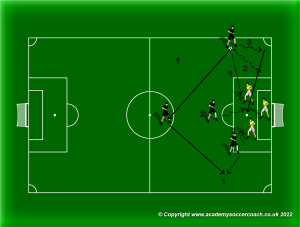
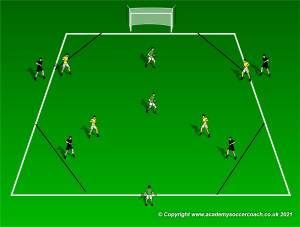

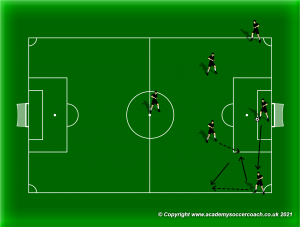
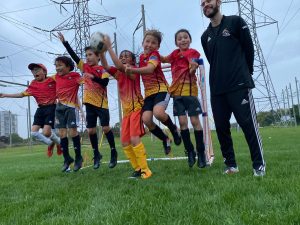
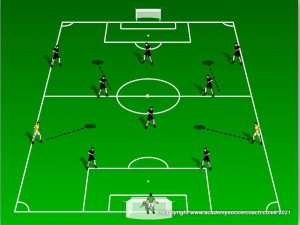
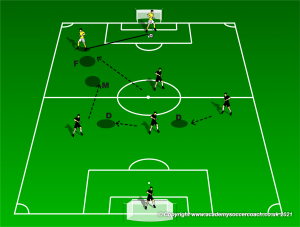
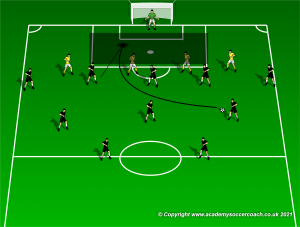
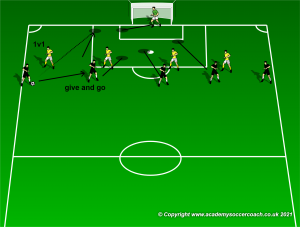
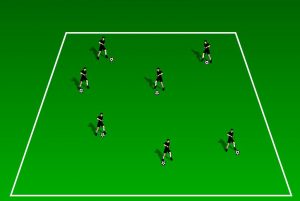

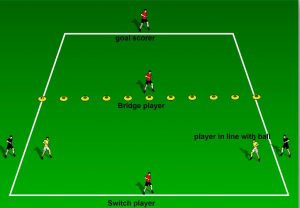
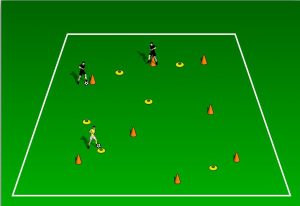
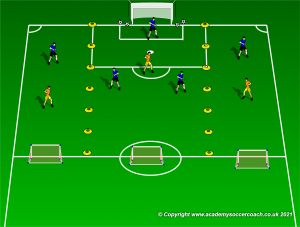

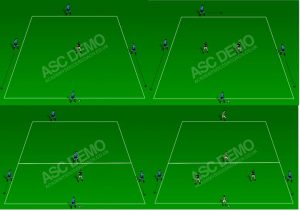




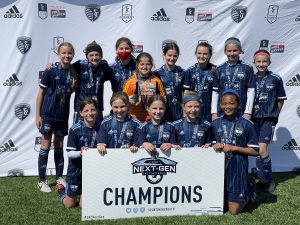

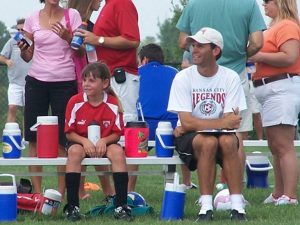
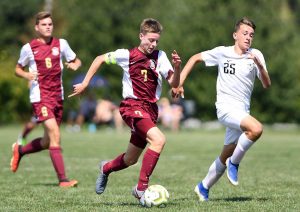
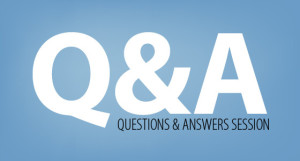

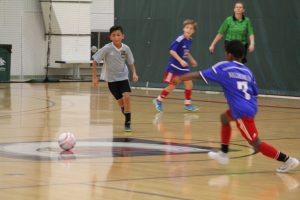
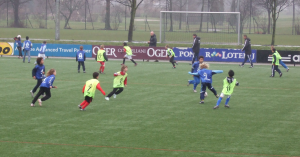
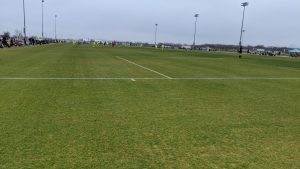
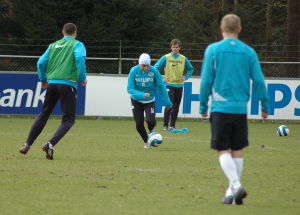

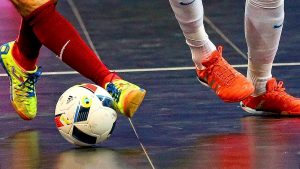

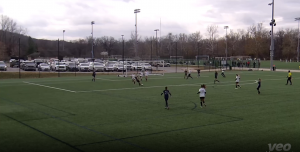

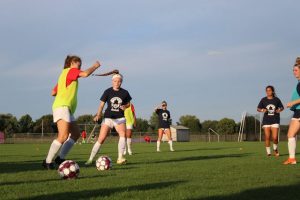
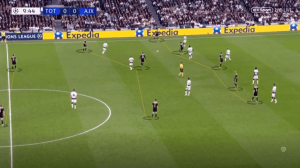

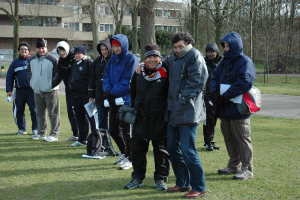
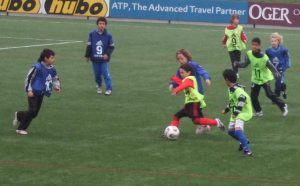


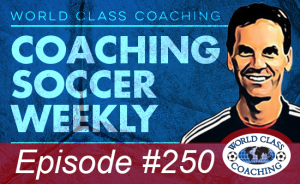
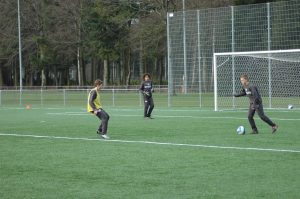
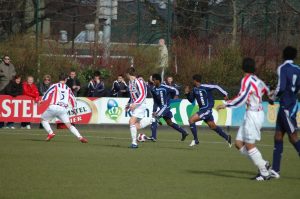


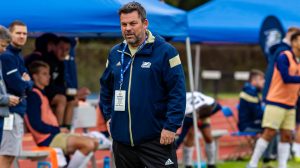




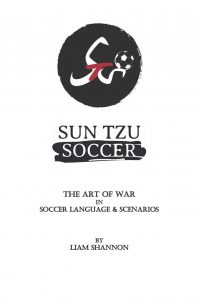
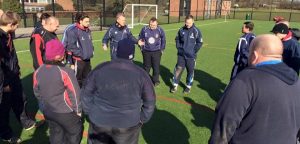
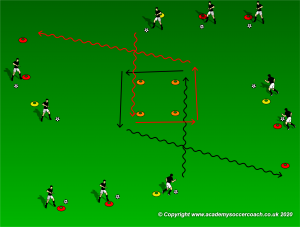

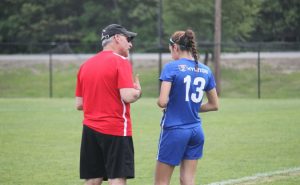
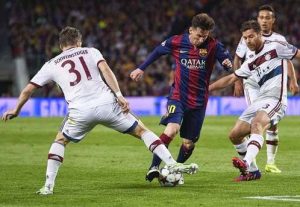


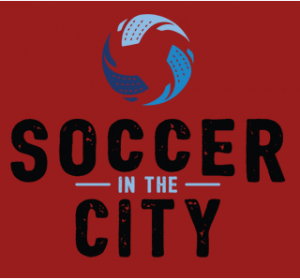
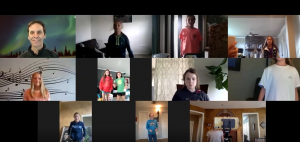






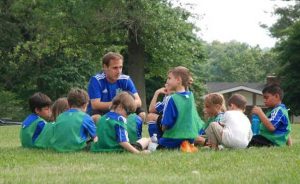
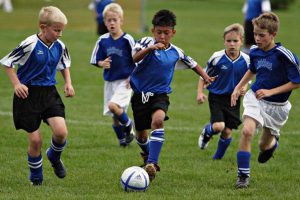

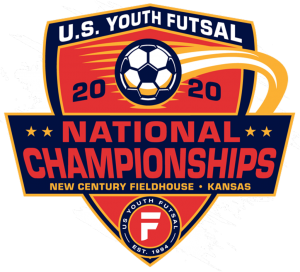

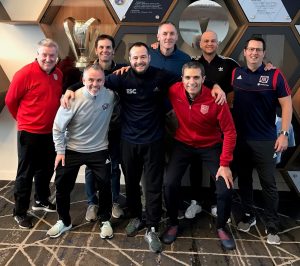
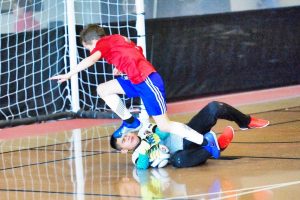

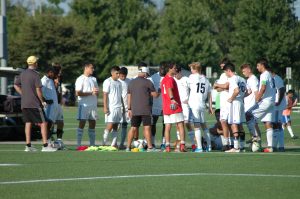
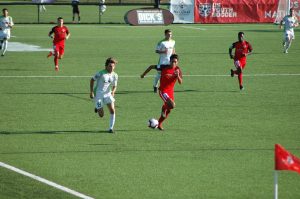
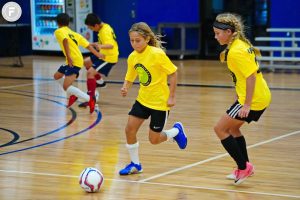
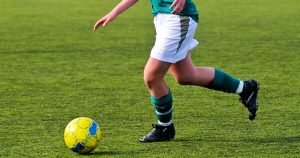
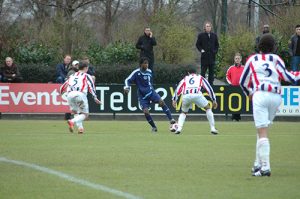
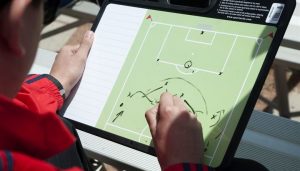
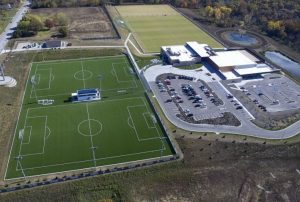

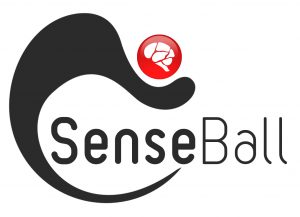
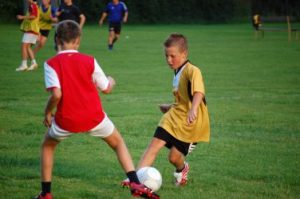
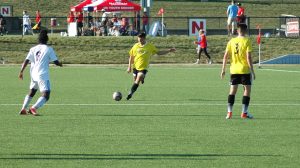
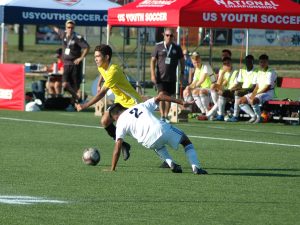
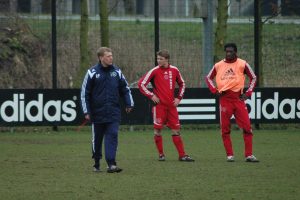
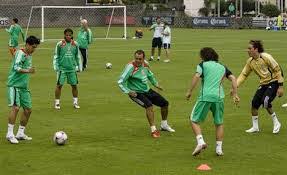
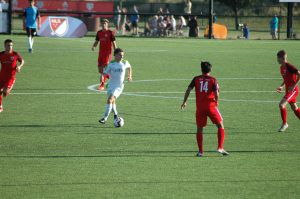

 The great part about it is that the games were spread out; one on Friday, one on Saturday and two on Sunday. Even the games on Sunday were spread out by a couple of hours so it gave me some time in between.
The great part about it is that the games were spread out; one on Friday, one on Saturday and two on Sunday. Even the games on Sunday were spread out by a couple of hours so it gave me some time in between.